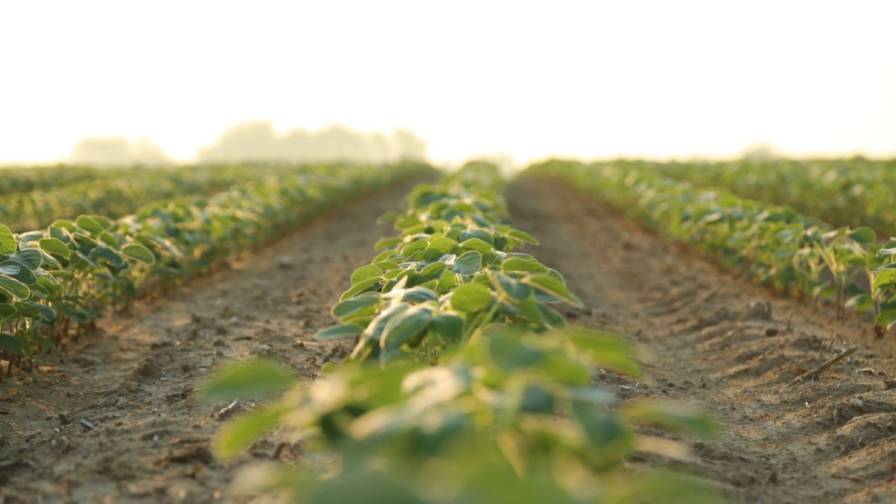5 Tips for Identifying Tar Spot
Tiny specks can spell big problems when it comes to corn yields. Regionalized Tar Spot outbreaks were a major challenge for some Midwestern farmers last year, and it’s an issue that all farmers will want to keep an eye on throughout the growing season. Resulting from a fungal pathogen that’s prominent in wet soils, Tar Spot and its signs can appear and spread quickly.
“In Midwestern hot spots last season, farmers reported the rapid spread of the disease in their fall fields, which turned brown and died in just a week’s time,” recalls Todd McRoberts, NK Seeds Agronomy Manager. “While we have a lot of the 2022 growing season left to go, wetter environments and moderate temperatures in spring can set the stage for Tar Spot, which could thrive for a couple of months in these fields if left unchecked.”
McRoberts says that it can be challenging for farmers to identify Tar Spot because its distinguishable signs mimic those of other common corn diseases. And like with any agronomic issue, knowledge is power when it comes to managing the effects of Tar Spot.
Five Tips for Identifying Tar Spot
- Look at placement and movement. The disease begins on the lower corn leaves and moves to the upper plant and ear husks.
- Rule out other diseases. It’s easy to confuse Tar Spot with Common Rust or Southern Rust late in the season. But while all are infamous for small, dark-colored spots, rust spot pustules can be scraped off easily. Tar Spot lesions have a bumpy texture that is not easy to rub off, and they are sometimes surrounded by a tan halo.
- Inspect plants carefully. Tar Spot is found on healthy and dead plant tissue, and it appears on both the upper and lower surfaces of leaves.
- Know the difference between Tar Spot and late-season degradation. Tar Spot is sometimes mistaken for saprophytic organisms, which help to break down dead plant tissue in the fall. However, they lack the bumpy texture that’s indicative of Tar Spot infection.
- Send samples for expert diagnosis. Because Tar Spot can be difficult to diagnose on sight, a laboratory analysis may be required for a positive diagnosis.
Once an outbreak of Tar Spot occurs, it can have a significant impact on yields. Fortunately, with careful management, farmers can slow the damage this year and safeguard their affected fields for next season.
“If you have issues this year and you plan on planting corn in that same field next year, finding a hybrid with strong Tar Spot tolerance is a must,” advises Joe Bollman, NK Seeds Corn Product Manager. “NK corn hybrids have extremely strong Tar Spot tolerance compared to most brands on the market today.”
With each season, we gain new insights and tools for managing Tar Spot. Hybrid selection, crop rotation and tillage can help farmers fend off the yield-robbing disease.
- When it comes to hybrid selection, consult the NK Seed Guide to choose hybrids with low susceptibility to Tar Spot for fields with a known history of the disease. (Look for products with low sensitivity ratings.)
- Consider crop rotation and tillage. Rotating to crops other than corn and using tillage to bury residue can help reduce fungus inoculum levels in fields.
- Trials have indicated that applying fungicide early, at or before the first signs of disease, can be effective against Tar Spot. (While early fungicide programs applied before the onset of disease may be effective, late-season, curative fungicide applications are not recommended.)
“The disease will continue to spread if the environment is favorable, so a grower could still use a fungicide application or two if the infestation continues to spread,” says McRoberts. “Hybrids with strong tolerance are one of the best mitigation tools, along with a fungicide that has been shown to slow down the damage done by the disease.”
The right approach to fungicide application may differ depending on when signs of the disease first appear — and it could also help keep other fungal diseases in check.
“If conditions are favorable for Tar Spot development early in the season, farmers should consider a two-pass fungicide program using Trivapro or Miravis Neo fungicide at the V4 to V8 corn growth stage and the VT/R1 growth stage,” McRoberts advises. “If the risk of Tar Spot development is lower, farmers might instead consider an application of Trivapro or Miravis Neo fungicide at the VT/R1 growth stage. This approach may also combat other yield-reducing foliar diseases.”





